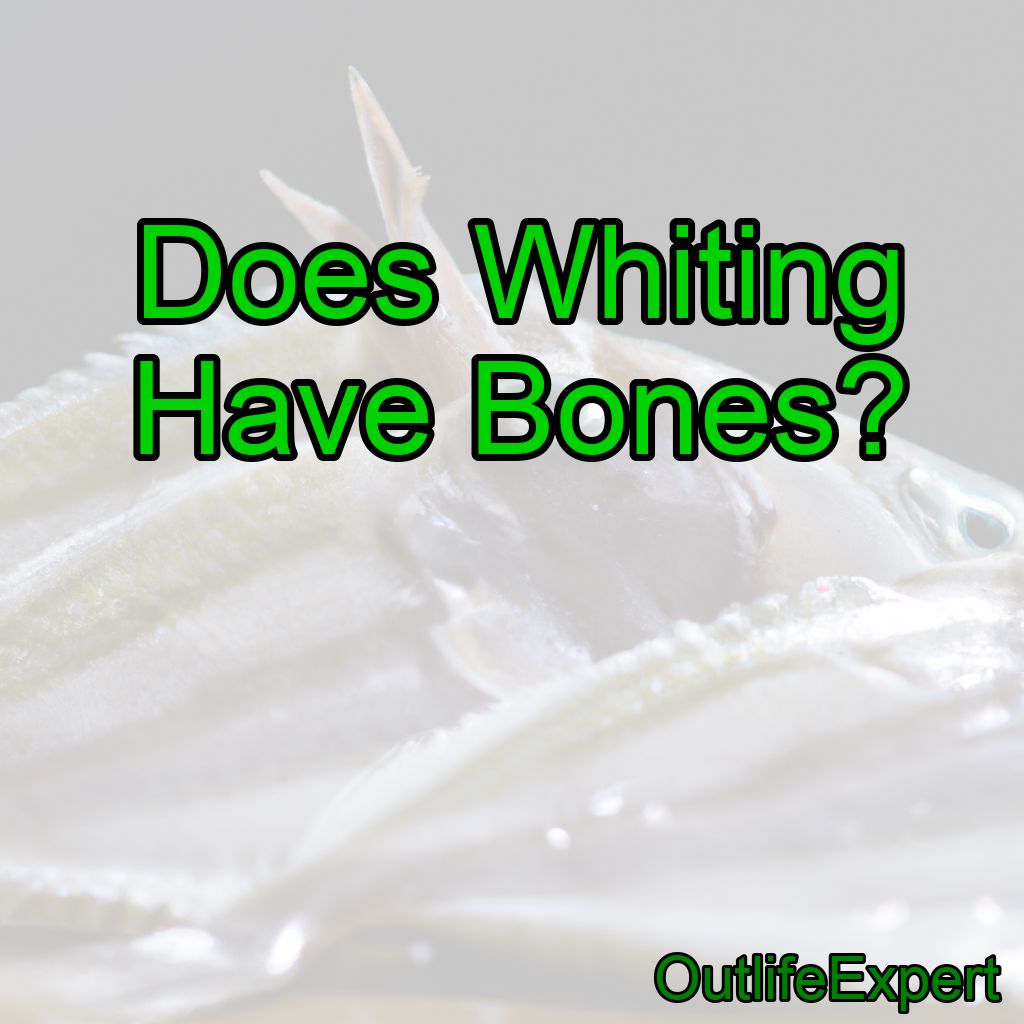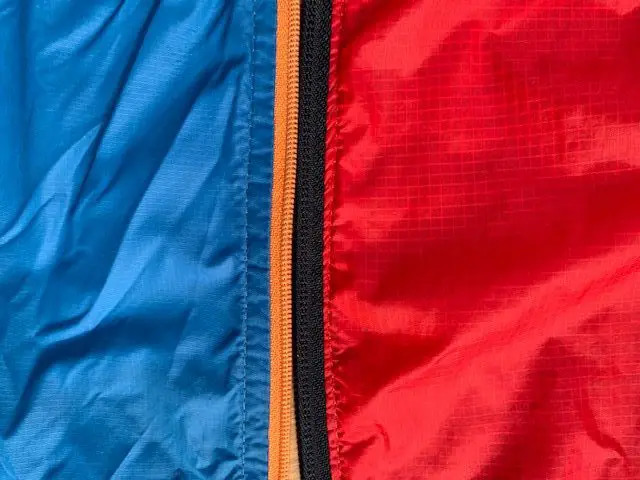Yes, whiting have bones. As a marine biologist, I have encountered numerous species of fish throughout my career, and whiting is one of them. Whiting is a popular fish species in many parts of the world, especially in the United States, Europe, and Australia. They belong to the Gadidae family, which also includes other well-known fish species such as cod, haddock, and pollock. In this blog post, I will share my personal experiences and knowledge on this fascinating fish, focusing on their bone structure and other interesting facts.
An Overview of Whiting
Distribution and Habitat
Whiting are found in various parts of the world, mainly in the North Atlantic Ocean and the Mediterranean Sea. They inhabit shallow coastal waters, usually at depths of around 50-100 meters. Whiting prefer sandy and muddy bottoms, where they can hide from predators and search for prey. They are also found in estuaries, especially during their juvenile stage.
Physical Characteristics
Whiting are relatively small fish, measuring up to 70 cm in length and weighing around 3 kg. They have an elongated body, a pointed snout, and three dorsal fins. Their color varies from brownish or greenish on the back to silver on the sides and belly. The lateral line, which runs from the head to the tail, is quite prominent and helps the fish detect vibrations in the water.
Diet
Whiting are carnivorous fish, feeding primarily on other small fish, crustaceans, and mollusks. Their diet consists of species like sand eels, sprats, shrimps, and even juvenile whiting. They use their sharp teeth and strong jaw to catch and crush their prey.

Whiting Bone Structure
Skeletal System
Like most fish, whiting have a bony skeletal system. Their skeleton is composed of two main parts: the axial skeleton, which includes the skull, vertebral column, and rib bones; and the appendicular skeleton, which consists of the pectoral and pelvic girdles, as well as the fin bones.
Vertebral Column and Ribs
The vertebral column of a whiting fish consists of numerous vertebrae, which protect the spinal cord and provide support for the fish’s body. The number of vertebrae varies among whiting species, but it generally ranges from 30 to 50. The rib bones are attached to the vertebrae and help protect the fish’s internal organs.
Fins and Fin Bones
Whiting have several fins, including the dorsal, caudal, anal, pelvic, and pectoral fins. Each fin is supported by fin rays, which are bony structures that extend from the fish’s body. The number and arrangement of these fin rays vary among whiting species, but they generally consist of both soft and spiny rays. The spiny rays provide stability, while the soft rays allow for flexibility and movement.
Cooking and Eating Whiting
Preparing Whiting for Cooking
When preparing whiting for cooking, it is essential to remove the bones, especially if you plan to serve the fish to children or people who might have difficulty eating fish with bones. To do this, you can use a fish filleting knife to remove the backbone and rib bones, then carefully feel for any remaining small bones and remove them with tweezers or your fingers.
Cooking Methods
Whiting is a versatile fish that can be cooked in various ways, including grilling, frying, baking, and poaching. Due to its delicate flavor and texture, it is best to use simple cooking methods and seasonings that won’t overpower the fish. Some popular ways to prepare whiting include fish and chips, grilled whiting fillets, and pan-fried whiting with lemon and herbs.
Nutritional Benefits
Whiting is a lean fish that is low in calories and fat, making it a healthy choice for those looking to maintain a balanced diet. It is also an excellent source of high-quality protein, omega-3 fatty acids, and essential vitamins and minerals such as vitamin B12, selenium, and iodine.
Whiting vs. Other Fish Species
Comparison with Cod, Haddock, and Pollock
Whiting is often compared to other fish species in the Gadidae family, such as cod, haddock, and pollock. While they share several similarities, there are also differences in terms of taste, texture, and nutritional content. Whiting has a milder flavor and more delicate texture compared to cod and haddock, making it more suitable for people who prefer less “fishy” tasting seafood. In terms of nutrition, whiting is leaner than both cod and pollock, making it a healthier option for those looking to reduce their fat intake.
Sustainability and Environmental Impact
Whiting is considered a sustainable fish species due to its relatively fast growth rate and high reproductive capacity. However, it is essential to ensure that the whiting you purchase comes from a well-managed fishery and is caught using environmentally friendly methods. Look for certification labels like the Marine Stewardship Council (MSC) to ensure that the fish you buy is sustainably sourced.
Conclusion
In conclusion, whiting do have bones. As a marine biologist and lover of seafood, it’s essential to be aware of the anatomy and characteristics of the fish we consume. Whiting is an excellent choice for those who enjoy a mild-flavored, lean, and sustainable fish. Here are ten quick facts about whiting:
1. Whiting belong to the Gadidae family, which also includes cod, haddock, and pollock.
2. They are found in the North Atlantic Ocean and the Mediterranean Sea.
3. Whiting inhabit shallow coastal waters, preferring sandy and muddy bottoms.
4. They have an elongated body, a pointed snout, and three dorsal fins.
5. Whiting feed primarily on small fish, crustaceans, and mollusks.
6. Their skeletal system consists of an axial and appendicular skeleton, including vertebrae, rib bones, and fin bones.
7. Whiting is a versatile fish that can be cooked in various ways, including grilling, frying, baking, and poaching.
8. It is lean, low in calories, and a good source of high-quality protein, omega-3 fatty acids, and essential vitamins and minerals.
9. Whiting has a milder flavor and more delicate texture compared to cod and haddock.
10. It is considered a sustainable fish species due to its fast growth rate and high reproductive capacity.
FAQs
How do you get bones out of whiting?
To get bones out of whiting, use a pair of tweezers or fish bone pliers to gently pull the bones out of the flesh. Start at the tail end and work towards the head, feeling for any bones as you go.
Does whiting fish have bones when cooked?
Yes, whiting fish has bones when cooked. However, the bones are usually small and easy to remove. It is important to be careful when eating fish to avoid accidentally swallowing bones.
Is whiting a good fish to eat?
Yes, whiting is a good fish to eat. It is low in fat, high in protein, and a good source of omega-3 fatty acids. It also has a mild, sweet flavor that makes it a versatile ingredient in many recipes. However, like all fish, it’s important to choose sustainable sources and be mindful of potential contaminants such as mercury.
Which is better whiting or cod?
Both whiting and cod are delicious and healthy fish choices, but they have slightly different tastes and textures. Whiting has a milder flavor and a softer, more delicate texture, while cod has a firmer texture and a slightly stronger, more distinct flavor. Ultimately, the choice between whiting and cod comes down to personal preference and how you plan to prepare and serve the fish.
Is whiting fish farmed or wild?
Whiting fish can be both farmed and wild-caught.
Why is whiting fish so cheap?
Whiting fish is generally cheaper than other types of fish because it is a smaller, more abundant species that is easier to catch and has a less desirable taste compared to other popular fish.





